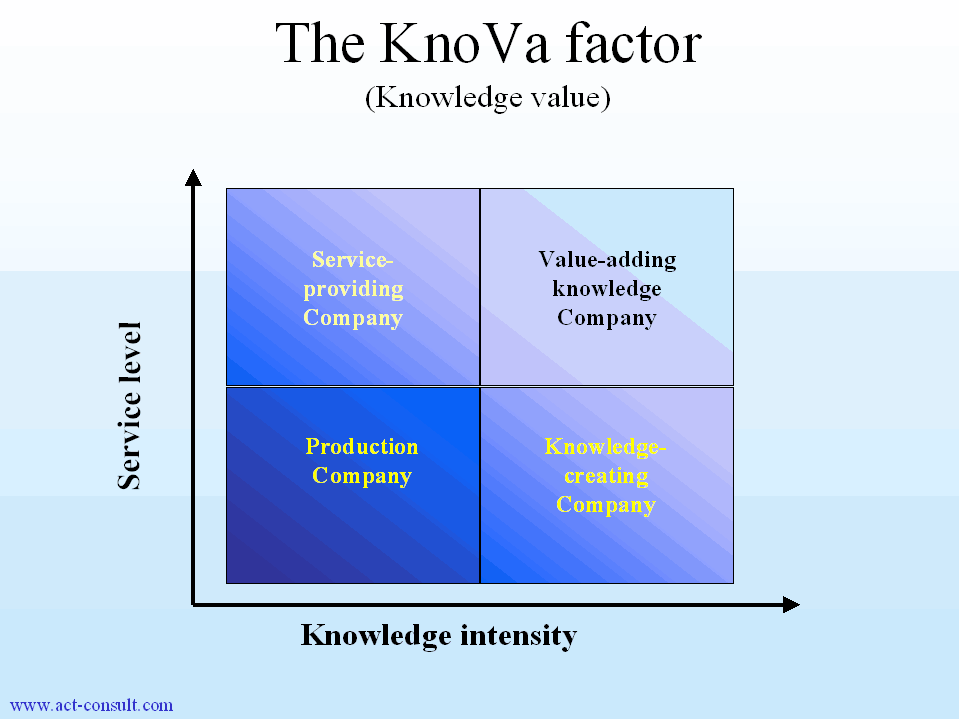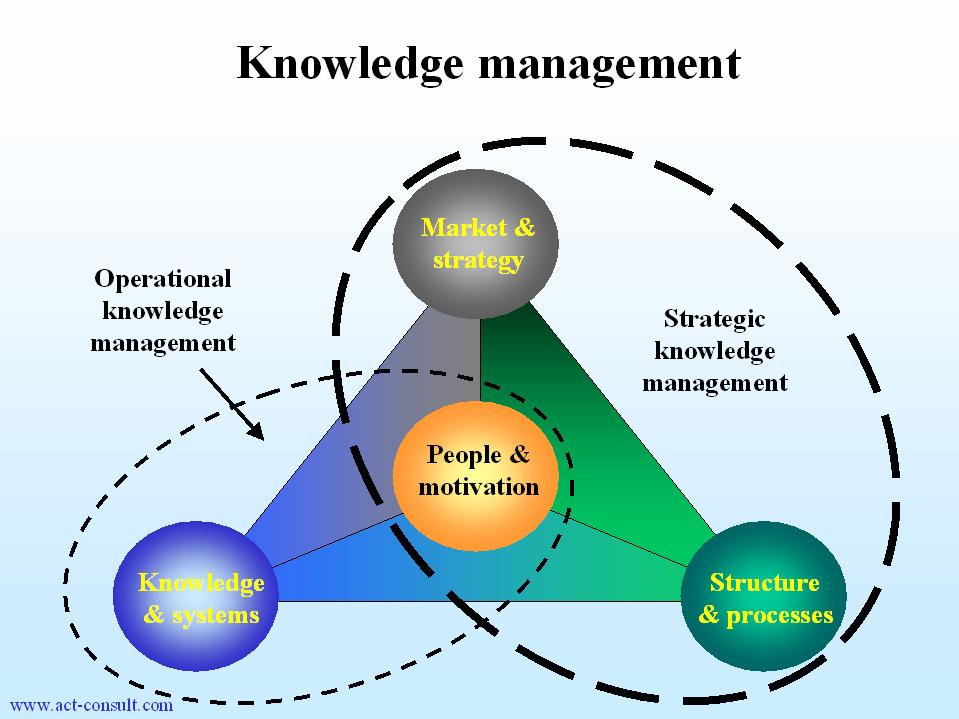

Value-based Knowledge Management
Uncertainty is the order of the day. Managers are experiencing that as we move further into the knowledge economy, the complexity of decision making will increase beyond our wildest nightmares.
The important factor here is providing knowledge, which adds value. It is not enough to generate knowledge, make it available, and hope for the best. Value adding knowledge is significantly different from indiscriminate information. And companies must be aware of this difference.
The KnoVa factor
The potential, which a company has for adding value, is called the KnoVa (knowledge value) factor (see figure 1). The value-adding potential of a company depends on two important ingredients: the service level a company provides and the knowledge intensity of the company, and the degree to which a company uses knowledge to produce products or services.

Figure 1
To be successful a company has to perform equally well along both axes i.e. it both have to concentrate on the level of service and the level of knowledge.
Value-based knowledge management
The main concern in Knowledge management is often to connect the staff to the system being used for the transfer and distribution of knowledge. It is the interaction between the two main elements Knowledge & systems and People & motivations. A more precise name is operational knowledge management since the core is the transfer and distribution of knowledge between the information system and the staff and vice versa. Accordingly to René Tissen et al operational knowledge management has many faces; implementing knowledge systems such as lotus notes, workflow management, expert systems, datawarehousing and data mining, intranets and extranets just to name a few.
The main remaining obstacles to exercise an effective operational knowledge management, when the IT-structure is in place, are cultural obstacles. Much of the cultural resistance to build a culture build on 'power is in sharing knowledge' is the opposite standpoint of the individual that 'knowledge is power'. Such a mentally profound change in attitude and thinking does require a well planned, long-term and robust organizational change process. Leading rather than simply managing will of course be much more successful. Collaborative tools must be aligned with collaborative incentives. 'Competency models' should focus on knowledge building and knowledge sharing since these skills are essential to build relations and linkages across the organization. Transparent structure combined with clear company vision and missions is equally a forceful drive in the change process.
Strategic knowledge management deals
with Structure & processes, People & motivations and Market & strategy (see figure 2). The issue is scarcely inadequate information, but the organization's unwillingness to change behavior. The key here is to build innovative groups and dynamic teams.
Figure 2
Taking the four cornerstones Knowledge & systems, Structure & processes, People & motivations and Market & strategy and make all four elements work together one have a value-based knowledge management approach.
The seminar
We will be pleased to give you more information on the ACT two-day seminar on value-based knowledge management. Please go to Contact information page
Literature
Tissen R, Andriessen D, Deprez FL. The knowledge dividend. London: Financial Times, Prentice Hall, 2000